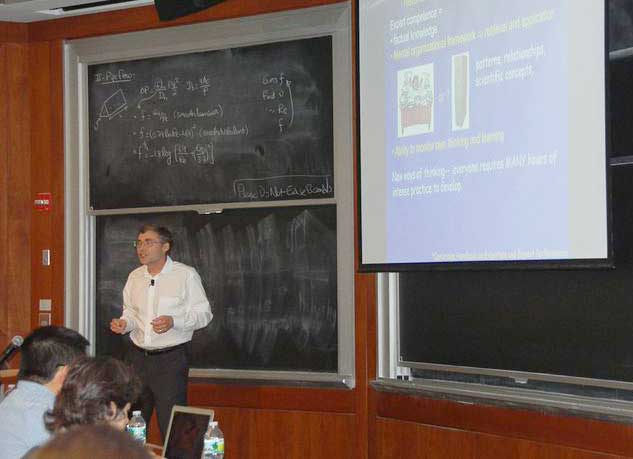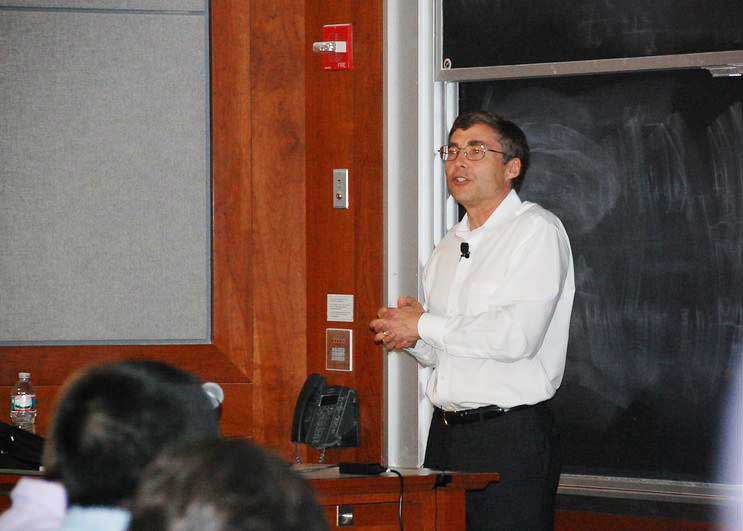What kinds of decisions does an expert make?
In an xTalk earlier this week, Carl Wieman presented his work on education reform: how cognitive psychology research has illuminated what it means to “think like a scientist or engineer,” and how those abilities are developed.
Wieman’s interest in this subject developed after observing that graduate students, while academically successful, were not able to apply physics concepts.

However, after 2-4 years working in a lab, they became experts. By working in the lab, students were able to practice thinking like a physicist and received regular feedback, which in turn fosters authentic learning.
Wieman’s research on how people learn focuses on creating an expertise-centered classroom, where good teaching is a gradual transfer of expertise from the instructor to the student. He identified three common elements of expert thinking:
In order to develop this type of expertise, students must have thousands of hours of practice, essentially creating new biological connections in their brains.
The expertise of the instructor is an indispensable component to this type of learning, with the instructor designing practice tasks, providing feedback, and illustrating how concepts are relevant. Tasks are challenging but do-able, and motivation is an essential ingredient.
 Creating an expertise-centered classroom is about developing opportunities for students to practice thinking and get feedback. Wieman starts his classes with a pre-class reading assignment, followed by an in-class question that students answer with a clicker. Students discuss their answers while the professor listens in, observing how the students are approaching the problem. Students re-vote on the answer and the instructor is able to explain any further questions. In these activities, student are practice thinking like a physicist by deciding on relevant information, selecting and applying a conceptual model, and testing their thinking and modifying as needed.
Creating an expertise-centered classroom is about developing opportunities for students to practice thinking and get feedback. Wieman starts his classes with a pre-class reading assignment, followed by an in-class question that students answer with a clicker. Students discuss their answers while the professor listens in, observing how the students are approaching the problem. Students re-vote on the answer and the instructor is able to explain any further questions. In these activities, student are practice thinking like a physicist by deciding on relevant information, selecting and applying a conceptual model, and testing their thinking and modifying as needed.
Wieman discussed several research studies in science and engineering classrooms that demonstrated the impact of teaching methods on how students learn. In a California Polytechnic University study, student learning doubled when instructors used an interactive/expertise based teaching method. Studies on peer-to-peer instruction also showed that peer-to-peer instruction, which allows for the same type of practice and feedback loop, has a lower subject failure rate.
In some ways, academic lectures are similar to lectures about how to ice skate or play golf. The information is meaningless unless the student is able to practice and get feedback. The fundamental principle is that when students have no practice and no feedback, they perform poorly. When students have both practice and feedback, they begin to develop expertise in the subject.
More information on Carl Wieman’s research is available at http://www.cwsei.ubc.ca/index.html. You can also review the video feed of Wieman's lecture.